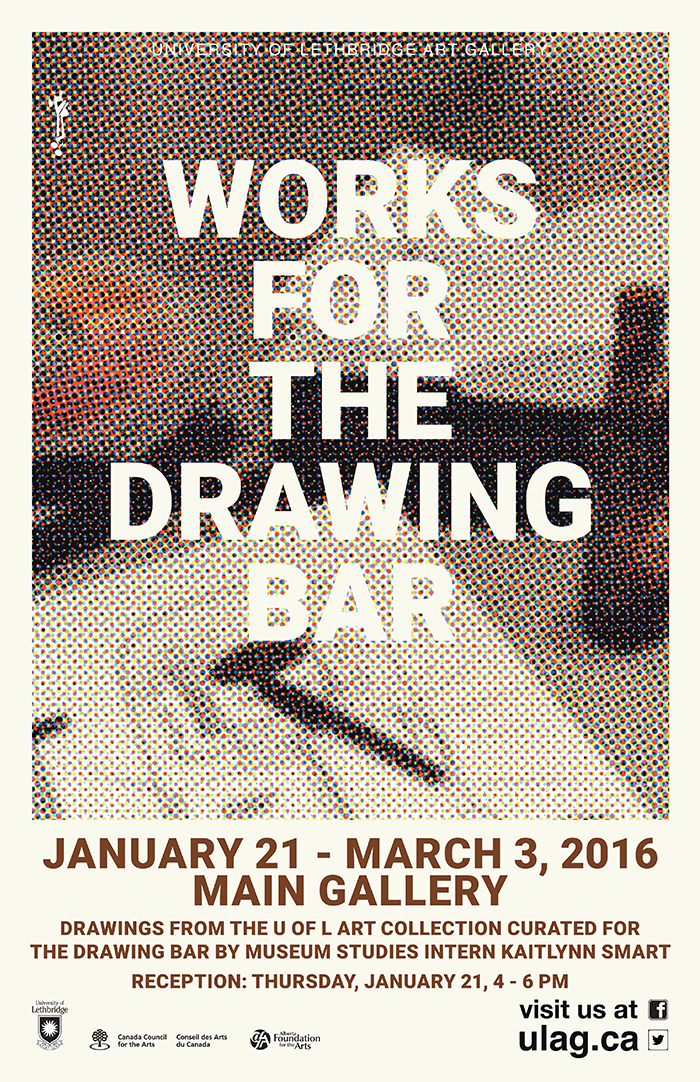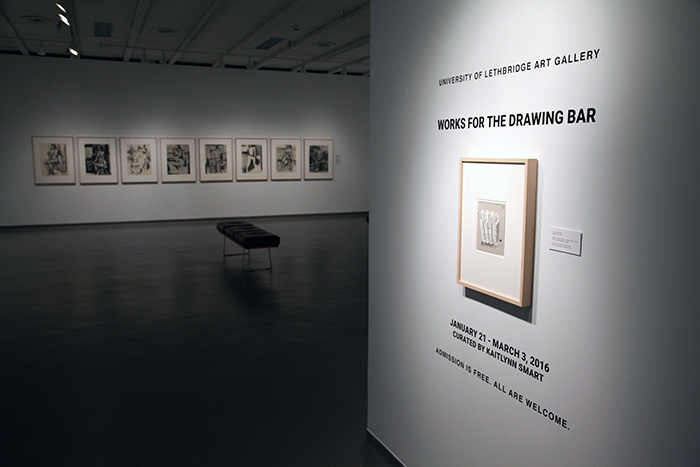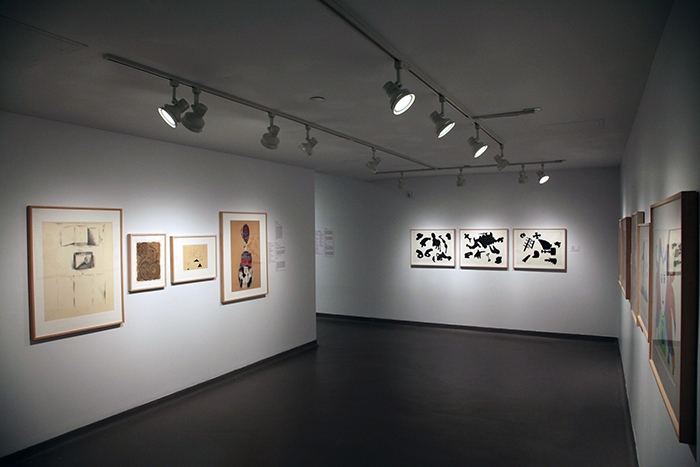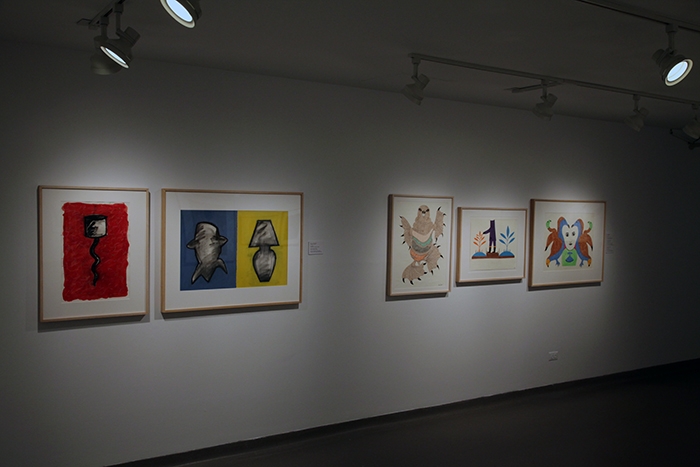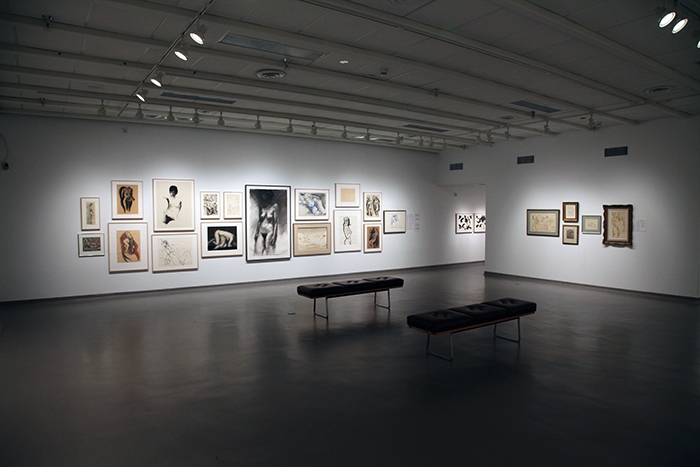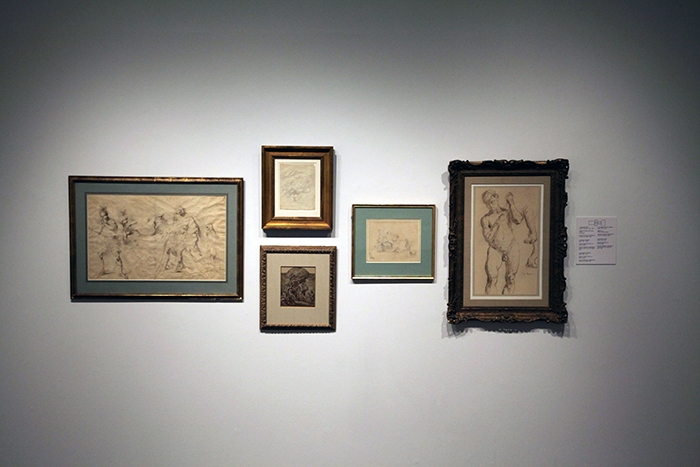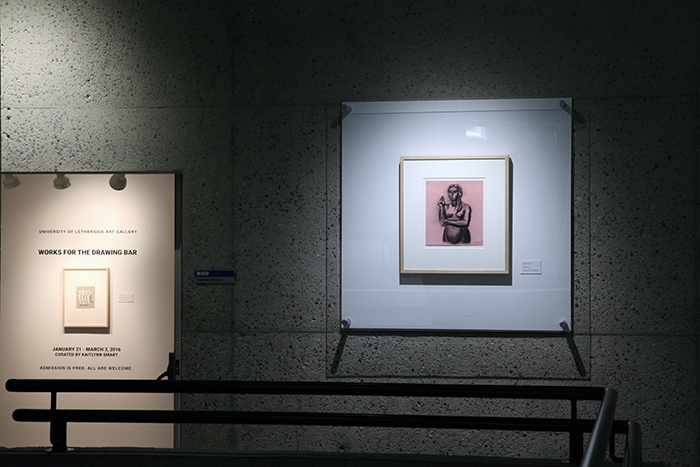Main Gallery
Works for the Drawing Bar
January 21 – March 3, 2016
Curated by Kaitlynn Smart, Museum Studies Intern
Continuing the long-running “art + people = x”, a series which connects artists and community members with the U of L Art Gallery’s extensive collection, this exhibition is part of a series of exhibitions and projects and will include a selection from our strong holding of drawings by Alberta, Canadian, and International artists.
Curatorial Statement
“Most of the concepts and issues that are central and seminal to the essential nature of drawing remain strangely elusive and inexpressible in terms other than those of drawing itself. A partial explanation of this problem is that it is precisely this inexpressible element that makes drawing valuable and irreplaceable: if everything could be converted into other forms of expression there would be no point in drawing.” (Clive Ashwin, “Drawing, Design and Semiotics” in Design Issues 1.2 (1984): 42.)
When I first began thinking about the drawings in the University of Lethbridge Art Gallery’s collection, I was surprised at just how difficult the actual classification of this art form really was. What constitutes a drawing? When is a painting like a drawing and, likewise, when does a drawing become too painterly? Is it a question of media, so that a drawing comes to encompass anything executed in a medium that is not paint? And in that case, what about mixed-media? I repeatedly asked myself these and other questions while searching the gallery’s database for items that fit this theme and then selecting the work for this exhibition.
Many artists and theorists alike have attempted to define drawing and determine its position in artistic practice while just as many declare that the act of drawing itself defies definition. It is a tricky topic to navigate and in trying to devise my own definition, I turned to ideas proposed by theorist John Elderfield who, in “Drawing as Suspended Narrative” in Leonardo (1971) divided the function of drawing into three parts: “1) preparatory works which are separate and distinct from the final artistic product; 2) preparatory works which are deprived of their independent value because they are materially incorporated into the finished work of art; and 3) works executed according to the usual drawing techniques but have the character of independent works.” Elderfield further surmised three methods of drawing: as an artwork, a drawing can serve as both a preliminary sketch and complete work in and of itself. It can be a record of what is seen and experienced with the senses just as easily as it can serve to visualize the non-existent; that which is imagined or conceptualized. Furthermore, a drawing can serve as a graphic symbol which can be read because its meaning is commonly understood. It was this kind of definition, proposed by Elderfield, that made the most sense for me and helped me to conceptualize how I would lay out this exhibition
The artworks exhibited in “Works for the Drawing Bar” are varied to present the range of what a drawing can be and to reflect the strength of the University of Lethbridge Art Collection itself. There are a number of more ‘classical’ style drawings that epitomize artistic mastery and are easily placed within the most readily acceptable definition of ‘drawing’. These works are typically executed in obvious drawing media including graphite, charcoal or oil pastel. Other works, however, are not so easily classified. In a number of instances the drawings border on the classification of painting and further still, some drawings are executed in media that also can be classified as painting, such as ink or watercolour. There are no hard-and-fast rules for what a drawing is or can be, but despite these ambiguous distinctions, such rules become an important way of classifying and exhibiting art. Ultimately, I decided not to establish a singular definition true of all the drawings presented, but instead left classification to the viewer’s discretion, so they might be challenged in the same way I was when sorting through this category.
Throughout this process I have expanded my previously narrow definition of drawing from one based on media to one that can pretty much include anything depending on its artistic qualities and function. The drawings in this exhibition are intentionally meant to challenge modes of artistic classification while surveying the breadth and possibility of what drawing can be, and it is my hope that viewers take from this exhibition a more varied understanding of the term for themselves.
To provide additional context, there are extended labels for some of the works in the exhibition. These were written by students in the Introduction to Museum Studies course (AHMS 2900) last semester. The students selected which works interested them and then chose the perspective on the work that they wanted to address. As a result, viewers have a range of voices adding to the selection of drawings and to the viewer’s own experience.
– Kaitlynn Smart, Museum Studies Intern
